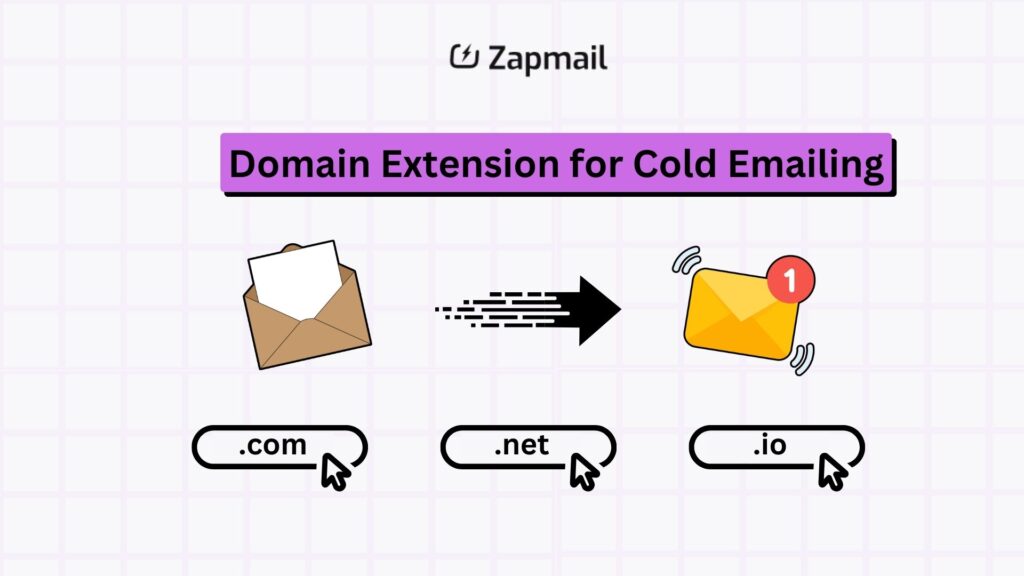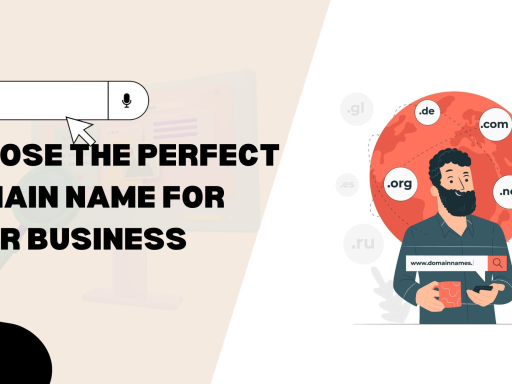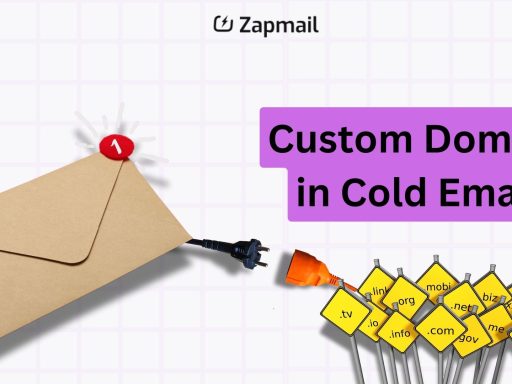Did you know there are nearly 1,600 different domain extensions listed in the Internet Assigned Numbers Authority (IANA) Root Zone Database? But not all are good for cold emailing. The .com TLD is the top choice, known for its high deliverability rates and strong reputation with email providers.
Cold email domains are different from your main domain. They’re used only for sending outreach emails. Using different domains can help get past spam filters and increase your email’s chance of landing in the inbox. But, it’s not just about the extension. Choosing a reputable TLD and setting up authentication (SPF, DKIM, DMARC) is key to making sure your emails are trusted and delivered.

Key Takeaways
- The .com TLD is the best domain extension for cold emailing due to its strong reputation and deliverability.
- Using a separate domain for cold emails can help bypass spam filters and improve inbox placement.
- Proper email authentication (SPF, DKIM, DMARC) is essential for ensuring your cold emails are trusted and delivered.
- Avoid low-trust TLDs that are commonly associated with spam and may trigger filters.
- Consider the cost and domain authority when selecting a TLD for your cold email campaigns.
Understanding Domain Extensions and Their Impact on Cold Emailing

The domain extension, or TLD, you pick for cold emailing matters a lot. It affects how well your emails get delivered. With over 1,600 domain extensions, picking the right one is key for success.
What Are Domain Extensions (TLDs)?
Domain extensions, or TLDs, are the last part of a domain name. They range from common ones like .com and .net to special ones like .io and .shop. The extension you choose can make ESPs see your domain as trustworthy or not.
How Domain Extensions Affect Email Deliverability
Some extensions are more trusted by ESPs than others. .com is usually the most reliable. But, newer extensions like .xyz can make your emails land in spam folders. Using a different domain for cold emails can protect your main brand.
The Role of Domain Authority in Cold Emailing
Domain authority is very important for cold email success. TLDs like .com and .io have high authority, making ESPs trust them more. But, new or uncommon extensions might not get the same trust, making it tough to reach the inbox.
Knowing how domain extensions and authority affect email delivery helps you choose wisely. This can boost your cold email success by getting your messages seen and acted upon.
Best Domain Extension for Cold Emailing
The .com top-level domain (TLD) is the best for cold emailing. It’s used by over 50% of websites. This makes it the most trusted by email providers and recipients.
.net and .io are also good choices. .net is for network-centric companies and is a good alternative to .com. .io is for startups and tech firms, especially in the gaming industry.
Stay away from .xyz, .free, and .yx for cold emails. They have a bad reputation and can get your emails blocked.
Choose a domain based on cost, reputation, and your audience. Warming up a .com TLD for 1-2 months helps. It builds trust with email providers.
Also, use email authentication like SPF, DKIM, and DMARC. This keeps your emails out of spam folders. The right domain and practices can boost your cold email success.
Common Domain Extension Mistakes to Avoid in Cold Email Campaigns
Choosing the right domain extension (TLD) is key for cold email success. Some TLDs can trigger spam filters and hurt trust with recipients. It’s important to avoid these low-trust TLDs to keep your emails delivered and engaging.
Low-Trust TLDs That Trigger Spam Filters
Avoid using .xyz, .free, or .yx domains. They’re known for spam and scams. These TLDs don’t have the trust that email providers want, so your emails might go to junk.
Regional Domain Extension Concerns
Regional TLDs like .co.uk or .de might seem good, but they can limit your reach. They might also trigger spam filters in some countries. Make sure your domain extension fits your campaign’s geographic focus to avoid issues.
Budget TLD Pitfalls
Cheap or new TLDs often have big deliverability problems. They’re seen as low-quality by email providers. Choose a domain extension that’s reputable and trustworthy, even if it costs more.
The domain extension you pick can greatly affect your cold email success. Focus on trust, authority, and global recognition. This way, your emails will reach the right people and engage your audience.

Setting Up Your Cold Email Domain for Maximum Performance
Starting a successful cold email campaign begins with a well-set domain. The right domain extension can greatly improve email delivery and outreach success.
Choose a top-level domain (TLD) like .com or .net for cold emailing. These are trusted by spam filters and email service providers (ESPs). This means your emails are more likely to reach the inbox. Stay away from unknown TLDs like .co, as they often have poor delivery rates.
Buy your domain from a reliable source like Google Domains or Namecheap. Set up authentication protocols like SPF, DKIM, and DMARC. This boosts your domain’s credibility and helps avoid spam flags.
Warm up your domain before sending out emails. Do this over 2-4 weeks by slowly increasing email volume. This helps build a good reputation with ESPs. Use services like MailToaster to automate this and improve delivery rates.
Setting up your domain correctly and following best practices can greatly enhance performance. This will help your messages reach your audience effectively. It’s a key step for a successful cold email campaign.
Conclusion
The .com domain is still the top choice for cold email success. It’s known for its high trust and delivery rates. When picking a domain for cold emails, choose reputable ones, set up DNS records, and slowly build up your domain’s reputation.
Stay away from low-trust TLDs and use domain variations wisely. This will help your best domain extension for cold emailing work better. A good successful cold email strategy helps you stand out and find valuable business opportunities.
For cold email success, use a complete approach. This includes picking the right domain, authenticating emails, managing your reputation, and optimizing your campaigns. Follow these steps to make the most of cold email for your business.
FAQ
The .com TLD is the top choice for cold emailing. It’s well-known and trusted, making it great for sending emails.
Domain extensions, or TLDs, are the part of a URL after the domain name (e.g., .com, .net, .org). Some TLDs are more reliable than others. .com is the most trusted. Email services often send emails from certain TLDs to spam folders.
Domain authority is key for cold emailing success. TLDs like .com, .net, and .io usually work better than newer ones.
Stay away from TLDs like .xyz, .free, or .yx. They have bad reputations and low authority. Budget TLDs often face deliverability issues and may be seen as spam.
For a cold email domain, pick a reputable TLD like .com or .net. Use proper authentication and warm up your domain for 2-4 weeks before big campaigns.



